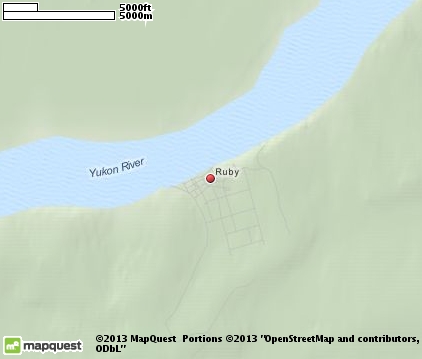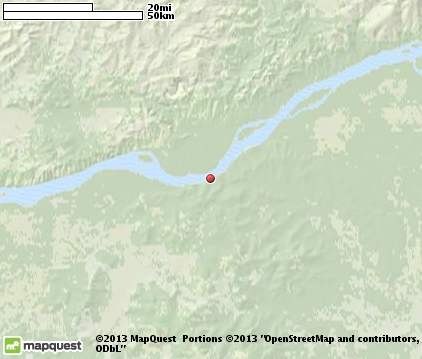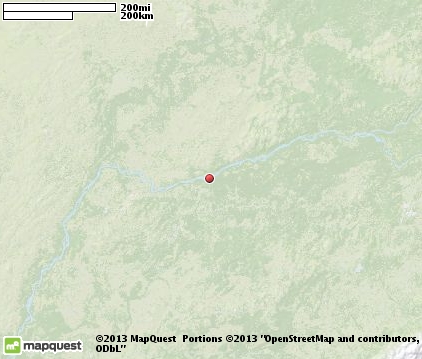 |
Ruby
is a historic village located in central Alaska's Yukon-Koyukuk Census area. The population is just under 200 residents. Like many of the small towns of Alaska, Ruby began around 1911 as a result of the gold rush. Gold was discovered in Ruby Creek and once the word got out, prospectors flocked to the area. The city of Ruby was officially founded in January of 1912 and incorporated on January 13, 1913. When gold was also discovered on Long Creek, about 30 miles south of Ruby, a stampede commenced. Soon, the town of Ruby became the supply point for the mines and the miners. The town was also called "The Hub of Alaska," due to its' location near the geographic center of the state. In its' heyday, it was also called "the Gem of the Yukon," and had a population of around 3,000. The bustling town had electricity, a variety of stores, two newspapers, a post office, two lumber mills, and regularly scheduled riverboat and barge services. For a while, Ruby even rivaled Fairbanks as the most civilized city in the Yukon. After the gold rush, people began to leave and by 1939, there were only 139 residents left in the town. By World War II, most of the people had Ruby and the mines were shut down. Natives from the nearby village of Kokrines migrated here and moved into the abandoned houses. Ruby incorporated as a second-class city in 1973. During the 1980s, telephones and television services were provided, and today, a federally-recognized tribe is located in the community - the Native Village of Ruby.

|
Ruby Vacation Rentals
|

|
|
|

|
Ruby Hotels and Resorts
|

|
|

|
Ruby Weather & Climate
|

|
|
|
Central Alaska, along the Yukon River, has a subactic climate with long, harsh winters and brief, warm summers. The climate is generally dry, with precipitation much greater in the mountains. The winter snowpack continues to melt well into the summer, resulting in high water in July or August. The climate in this region is best described as extreme and is the best example of a true subarctic climate. Both the highest and lowest recorded temperatures in Alaska have both occurred in the central interior region. Although brief, summer temperatures may reach into the 80s or 90s, while winter temperatures can fall to minus 60 degrees F. Inland, an average of less than 10 inches of rain falls a year. There are always weather events that may affect these precipitation averages, however, such as El Nino and La Nina.
|
| Month |
High Temp |
Low Temp |
Rainfall |
Ocean Temp |
| January |
- |
- |
- |
- |
| February |
- |
- |
- |
- |
| March |
- |
- |
- |
- |
| April |
- |
- |
- |
- |
| May |
- |
- |
- |
- |
| June |
- |
- |
- |
- |
| July |
- |
- |
- |
- |
| August |
- |
- |
- |
- |
| September |
- |
- |
- |
- |
| October |
- |
- |
- |
- |
| November |
- |
- |
- |
- |
| December |
- |
- |
- |
- |

|
Ruby Map & Transportation
|

|
|
 |
|
|
| Click each thumbnail image to enlarge. |
 |
 |
 |
 |
The closest airports in the area are the Edward G Pitka Sr airport (GAL) located about 42 miles west of Ruby in Galena, Alaska.
|

|
Ruby Attractions
|

|
|
Notice a problem with the information on this page? Please notify us.
|
Disclaimer: We recommend you conduct your own research regarding all accomodations and attractions found on this website. The distances shown on this website are straight-line distances as the crow flies. The road distance may be considerably longer. You assume all liability for use of any information found on this website. No information is confirmed or warranted in any way. By using our services you agree to the terms and conditions of this disclaimer.
|
| We are the #1 site for your Alaska Vacation presenting Alaska vacation rentals, hotels, weather and map for each city. |
Alaska Vacation .com
©1997-2025 All Rights Reserved.
|
|